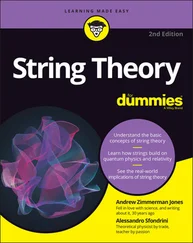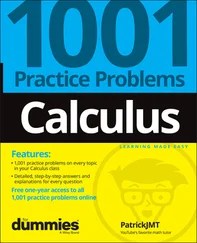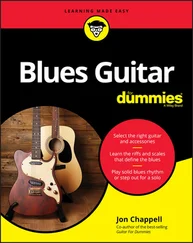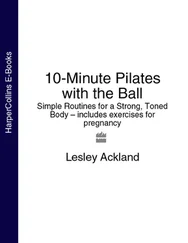Keeping tension at bay with some relaxation
Breathing naturally is the foundation of relaxation, or the state of non-tenseness that your body should be in whether you’re practicing scales or playing music. While your fingers and hands are exerting themselves, the rest of your body, including your shoulders, abdomen, and neck muscles, should all be relaxed. This relaxation ensures that the energy you do need is directed at the fingers. Otherwise, that energy may be used for keeping your stomach in a knot or your shoulders scrunched up around your ears.
 After you finish practicing on your guitar, try to really relax your body. Focus on each region — your chest and abdomen, your legs and arms, and your head and shoulders — and let the muscles go limp. (But don’t fall out of your chair!) If your shoulders fall 17 inches as you exhale, you know you haven’t been relaxing properly. In that case, you’ve been carrying around tension — relaxation’s evil twin.
After you finish practicing on your guitar, try to really relax your body. Focus on each region — your chest and abdomen, your legs and arms, and your head and shoulders — and let the muscles go limp. (But don’t fall out of your chair!) If your shoulders fall 17 inches as you exhale, you know you haven’t been relaxing properly. In that case, you’ve been carrying around tension — relaxation’s evil twin.
Focus, the positive counterpart to relaxation, is an intense concentration on a particular activity. For example, if you focus on something, such as your left-hand fingers moving across the fretboard steadily and accurately, all your energies go into that particular task. Typically, the area of focus is what your fingers are doing, but sometimes it involves your eyes and brain — such as when you’re memorizing repertoire or sight-reading difficult or unfamiliar music. Either way, whatever parts aren’t the area of focus while you’re practicing should be relaxed.
When you see confident and professional performers, they always look both focused and relaxed. Even when they’re in the throes of an intense performance, they’re having fun and their energies never seem improperly channeled. That’s what focus is. It means thinking only about what you’re playing and what’s coming up next in the music. Focus isn’t wondering what’s for lunch.
Increased strength and flexibility make guitar playing physically easier over time; similarly your powers of concentration can develop so that you get better at breathing evenly, maintaining a supple carriage (the way you carry your head and body), and applying intense focus where it’s needed to perform correctly, perfectly, or brilliantly.
Waking Up Your Fingers with Some Practice Exercises
The point of a warm-up is to get your hands and fingers moving on the guitar from a cold start. Physically, you’re simply stretching the muscles (or muscle-tendon units) and enabling blood to flow more freely through them. You don’t need to play a masterpiece to do that. In fact, you shouldn’t play anything too taxing, strenuous, or complicated when warming up. In this section, we ease you in with some simple exercises that are sure to wake up your fingers better than a second cup of coffee.
 Warm-ups are important, and you need to put the time in, but you don’t need to devote too much time to them — especially if you’re going to be playing scales and arpeggios as practice anyway. In that case, you can just go right to the scales, taking them slow and easy as if they are your warm-up. But, if you’re going to use a separate warm-up exercise, remember that you don’t have to limit yourself to the patterns presented here. Some guitarists — notably Carlos Santana — like to warm up by playing along with recorded music. Try a combination of activities and see which ones best get you pumped and primed for playing.
Warm-ups are important, and you need to put the time in, but you don’t need to devote too much time to them — especially if you’re going to be playing scales and arpeggios as practice anyway. In that case, you can just go right to the scales, taking them slow and easy as if they are your warm-up. But, if you’re going to use a separate warm-up exercise, remember that you don’t have to limit yourself to the patterns presented here. Some guitarists — notably Carlos Santana — like to warm up by playing along with recorded music. Try a combination of activities and see which ones best get you pumped and primed for playing.
Single-note exercises have the advantage of getting your left-hand fingers moving one by one, which helps them to fret accurately and has you warming up with the same type of motion you use to play scales, arpeggios, and their corresponding sequences. The following figures show four exercises that each get the fingers moving in slightly different ways. You can play these exercises with a pick or with your right-hand fingers.
Figures 2-1 through 2-4 show exercises based on left-hand finger patterns that repeat for each string. The two types of movements in these four figures require going across the neck (which means you don’t change positions) and diagonally (which means you change positions by going up the neck while also going across).
 Because these are exercises for the fingers, there’s nothing musically meaningful about them. They’re all just about the pattern. So here’s a hint: Look only at the tab to see the patterns more easily.
Because these are exercises for the fingers, there’s nothing musically meaningful about them. They’re all just about the pattern. So here’s a hint: Look only at the tab to see the patterns more easily.
Practice the warm-up in Figure 2-1 using your 1st, 2nd, 3rd, and 4th fingers to play the first four frets on each string. Moving along the string one fret at a time, in half steps, is known as playing chromatically.

FIGURE 2-1:“Across the neck” chromatic warm-up.
Figure 2-2 shows a warm-up with a diagonal pattern. This pattern requires a shift, or a move up to a new position. Play the first four notes with the first four fingers as you do in the previous warm-up. But on the fifth note, which begins at the 2nd fret on the 5th string, start with the 1st finger so you’ll be in 2nd position and can play frets 2, 3, 4, and 5 with fingers 1, 2, 3, and 4. On the 4th string, play frets 3, 4, 5, and 6 with fingers 1, 2, 3, 4, and so on. Here’s a simple way to think of it: Start each new string with the 1st finger.

FIGURE 2-2:Diagonal chromatic warm-up.
Figures 2-3 and 2-4 show warm-up exercises that are variations on the across and diagonal movements presented in the previous two figures. Figure 2-3 places a fret in between each played note (two frets equals a whole step; thus the name “whole step warm-up”). You have to stretch a bit to play these notes, but that stretch is part of the warm-up process. Remember the battle cry of personal trainers everywhere when your fingers start to burn: “No pain, no gain.”
Figure 2-4 takes the whole-step stretch presented in Figure 2-3 and applies it to diagonal movement.

FIGURE 2-3:“Across the neck” whole step warm-up.

FIGURE 2-4:Diagonal whole step warm-up.
Playing chords is a big part of guitar, but the motion involved is somewhat different from playing single notes. The fingers each play separate strings, but they move all at the same time as you switch chords. So while single notes involve individual fingers coming into play one after another, chords involve three or four fingers all remaining still and then moving at the same time. If you’re going to practice chords, it makes sense to warm up with chord-based exercises, such as the ones in Figures 2-5 and 2-6.
Читать дальше
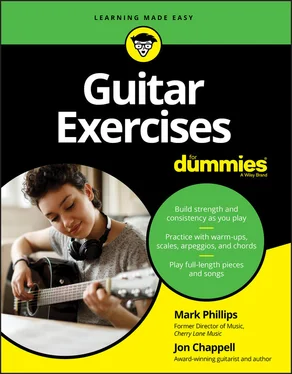
 After you finish practicing on your guitar, try to really relax your body. Focus on each region — your chest and abdomen, your legs and arms, and your head and shoulders — and let the muscles go limp. (But don’t fall out of your chair!) If your shoulders fall 17 inches as you exhale, you know you haven’t been relaxing properly. In that case, you’ve been carrying around tension — relaxation’s evil twin.
After you finish practicing on your guitar, try to really relax your body. Focus on each region — your chest and abdomen, your legs and arms, and your head and shoulders — and let the muscles go limp. (But don’t fall out of your chair!) If your shoulders fall 17 inches as you exhale, you know you haven’t been relaxing properly. In that case, you’ve been carrying around tension — relaxation’s evil twin. Warm-ups are important, and you need to put the time in, but you don’t need to devote too much time to them — especially if you’re going to be playing scales and arpeggios as practice anyway. In that case, you can just go right to the scales, taking them slow and easy as if they are your warm-up. But, if you’re going to use a separate warm-up exercise, remember that you don’t have to limit yourself to the patterns presented here. Some guitarists — notably Carlos Santana — like to warm up by playing along with recorded music. Try a combination of activities and see which ones best get you pumped and primed for playing.
Warm-ups are important, and you need to put the time in, but you don’t need to devote too much time to them — especially if you’re going to be playing scales and arpeggios as practice anyway. In that case, you can just go right to the scales, taking them slow and easy as if they are your warm-up. But, if you’re going to use a separate warm-up exercise, remember that you don’t have to limit yourself to the patterns presented here. Some guitarists — notably Carlos Santana — like to warm up by playing along with recorded music. Try a combination of activities and see which ones best get you pumped and primed for playing.




